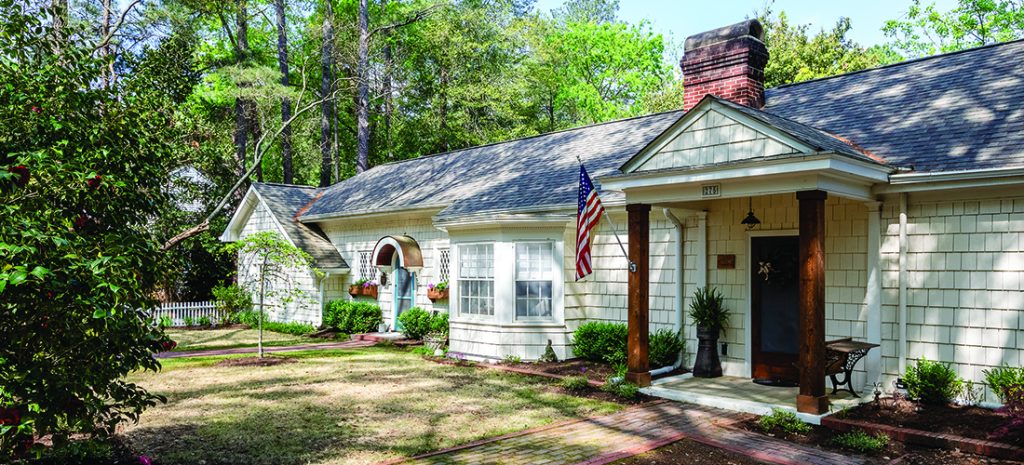
Reimagining the Rassie Wicker Cottage
By Deborah Salomon Photographs by John Gessner
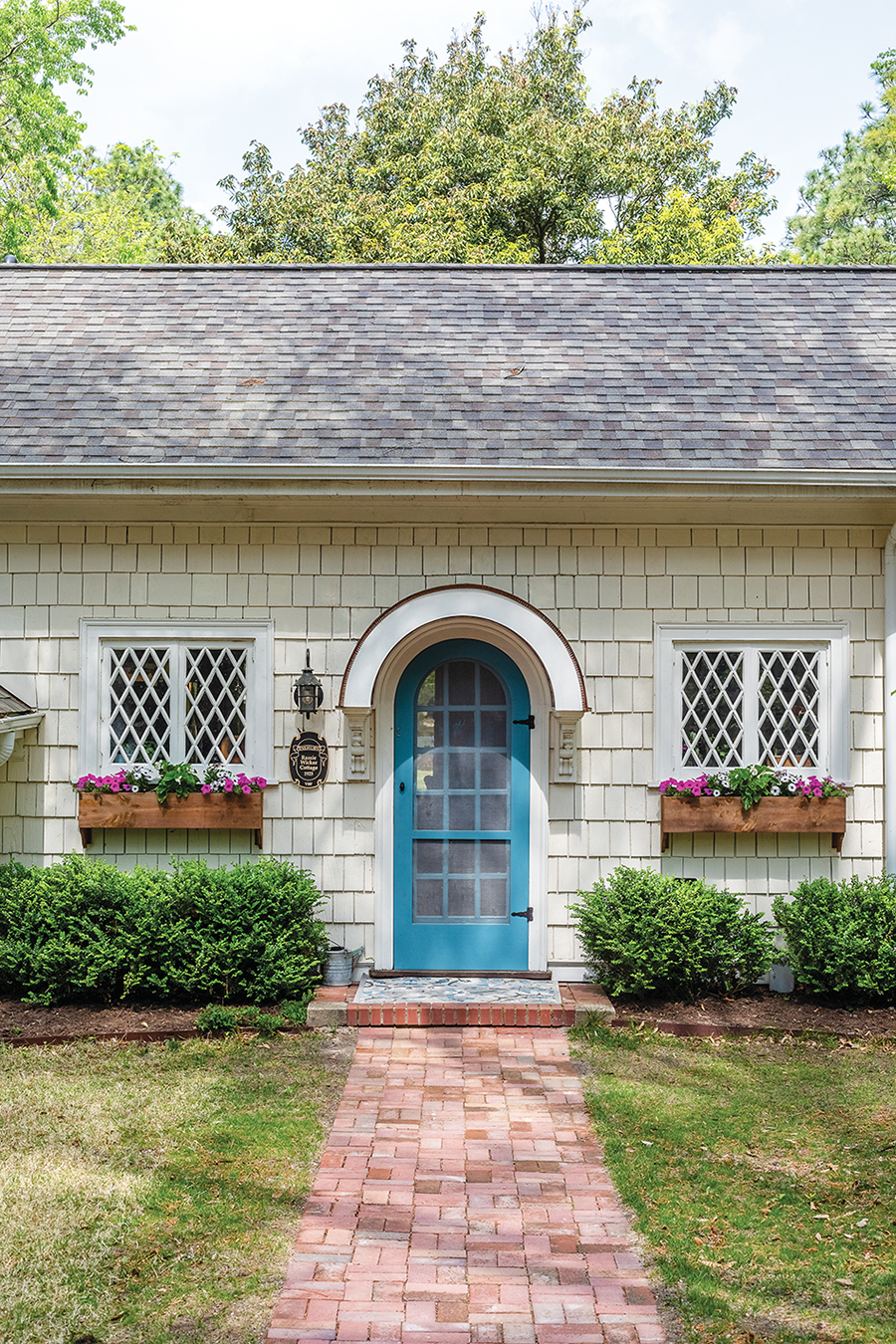
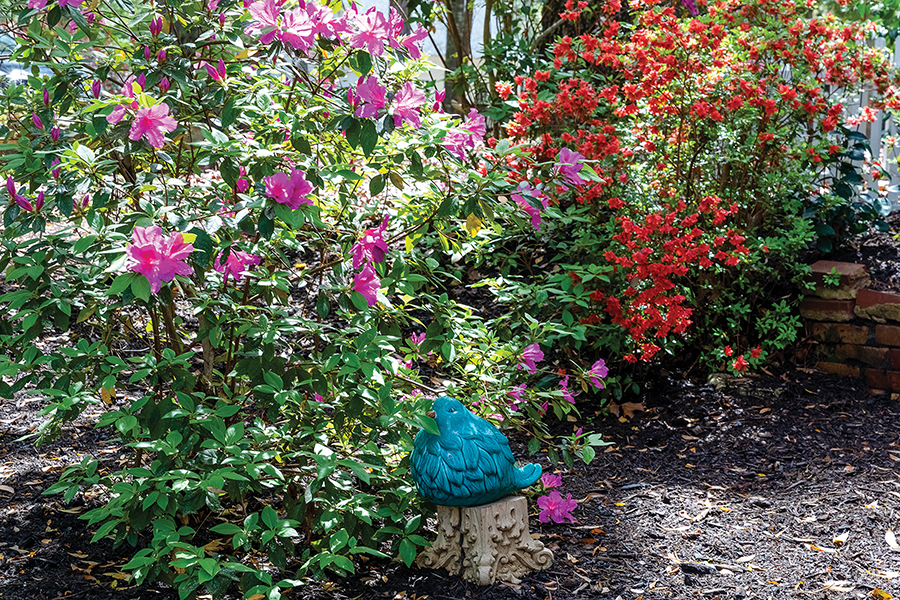
Should the spirit of Rassie Wicker return to his modest Pinehurst cottage, finding pipe and slippers — let alone his bed and a hearty breakfast — might pose a problem. Rooms have been added, space repurposed. The house now sports two front and three back doors, two full-size dining tables, a living room and a sitting room, plus a kitchen without defining walls or a Sub-Zero. Narrow hallways and a warren of cubbies, closets and pantries fulfill the owners’ requirements in clever ways, none of them glamorous, all of them practical.
Which suggests a kinship between Wicker, who built the cottage in 1923, and Bob and Lisa Hammond, whose purchase in 2017 initiated changes accomplished mostly with their own hands during weekends, while sleeping in a backyard cabin/guest house.
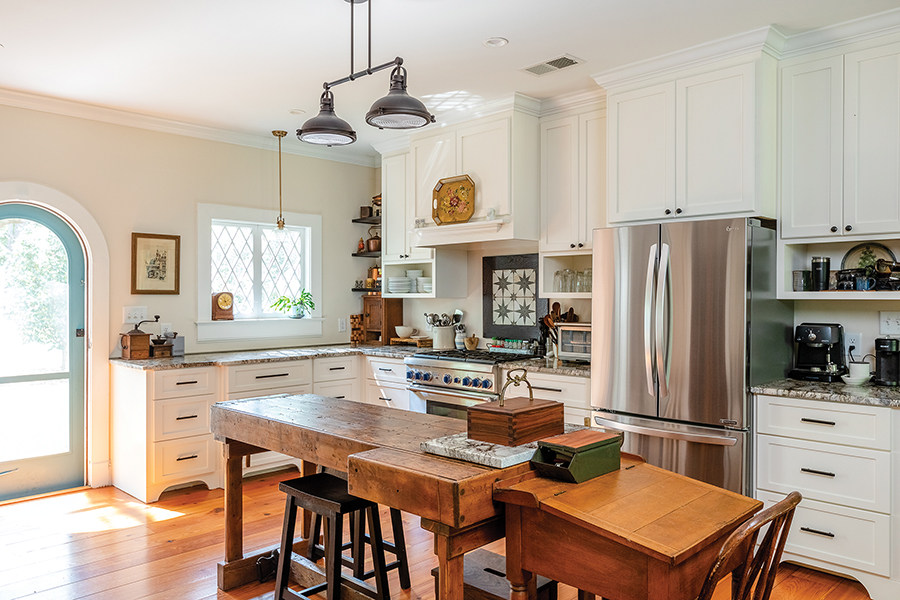
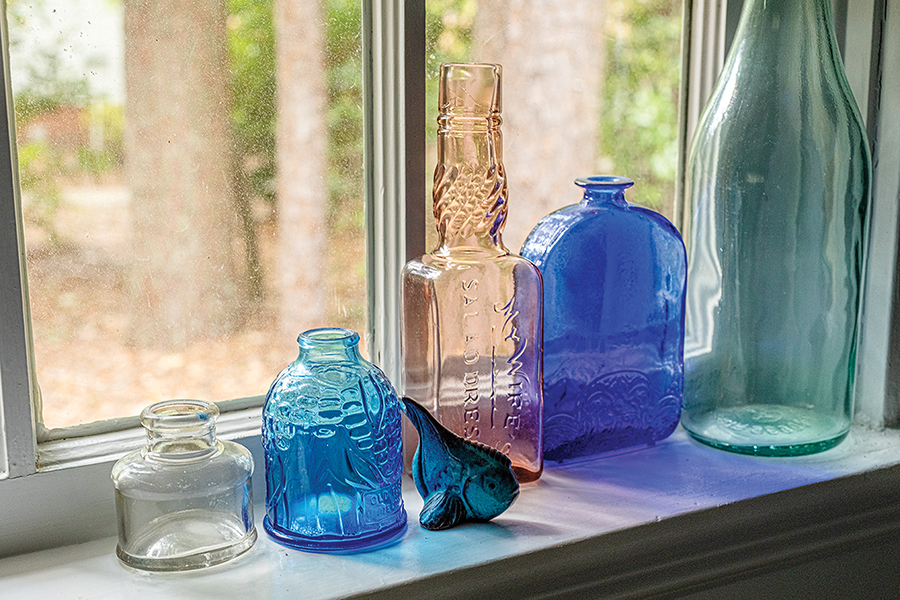
Bob, a retired optometrist, and Lisa, an almost-retired nurse, bring extensive construction know-how. Bob added some doors, sealed others. He crafted the footed Shaker-style kitchen cabinets, built tables with a skill tempered by homeowner pride — not unlike Wicker’s own.
A mystical connection, perhaps?
Rassie Wicker, born in 1892 to a carpenter/cabinetmaker father employed by Leonard Tufts, grew up to be a force in Pinehurst history. After graduating from a one-room schoolhouse he continued studies at what would become N.C. State University, returning to Pinehurst as surveyor-civil engineer and self-styled Moore County historian.
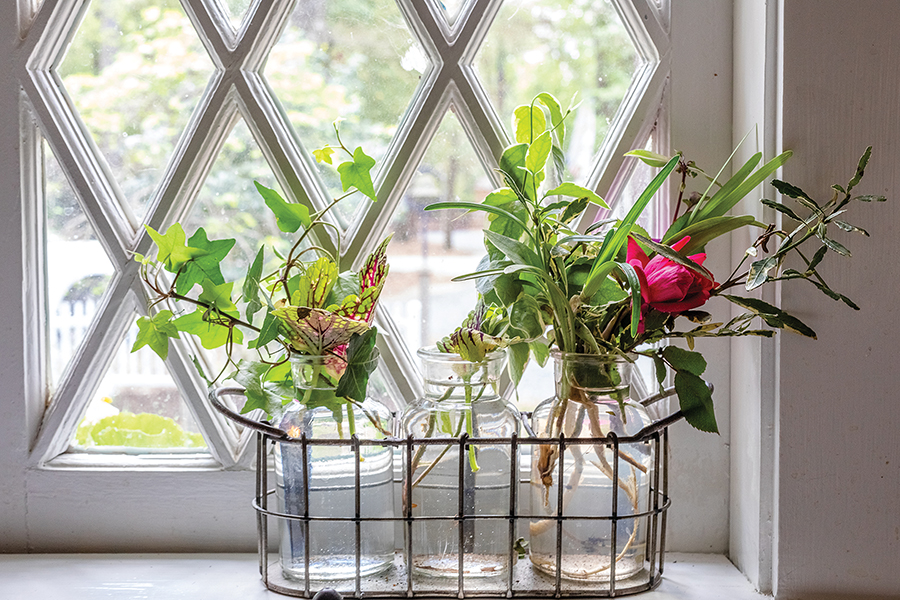
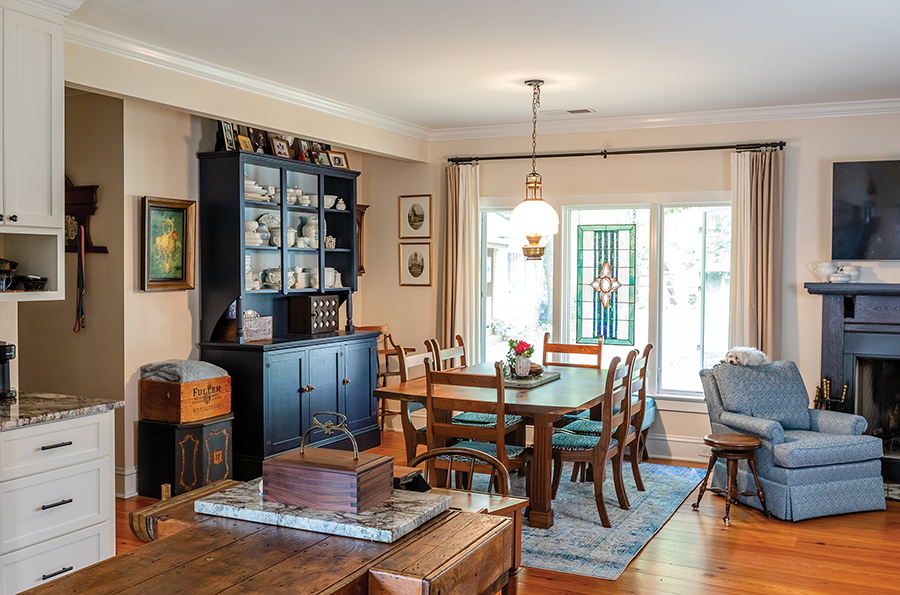
After serving in Europe during World War I, Rassie married Dolly Loving, had two children, and in 1923 built a home on Dundee Road. Over the years Pinehurst’s “Renaissance man” helped configure village streets and greenspaces. He died in 1972, and Rassie Wicker Park was named in honor of him in 1995.
The Wicker homestead had been updated and well-maintained when Bob and Lisa discovered it while living in a three-story brick Federalist in Holly Springs. Lisa wanted an old house to restore in retirement. Golf sweetened the deal for Bob.
“What about Pinehurst?” he suggested.
Like other retirees, Lisa pictured something walking distance to the village. Availability for these prime locations was, as usual, tight. Then, while driving out of Pinehurst they spotted the Wicker cottage, its brown shakes painted yellow, in a neighborhood Tufts intended for resort employees.
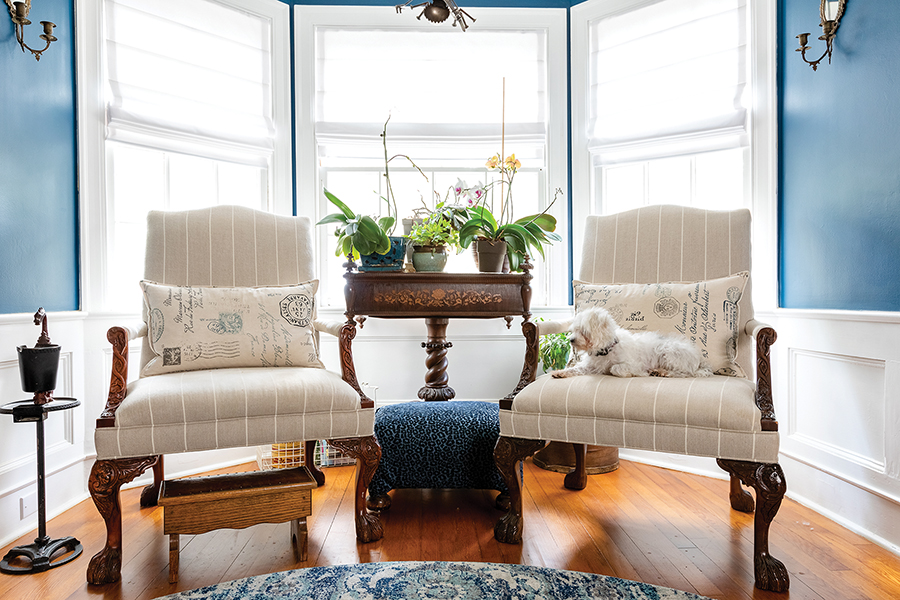
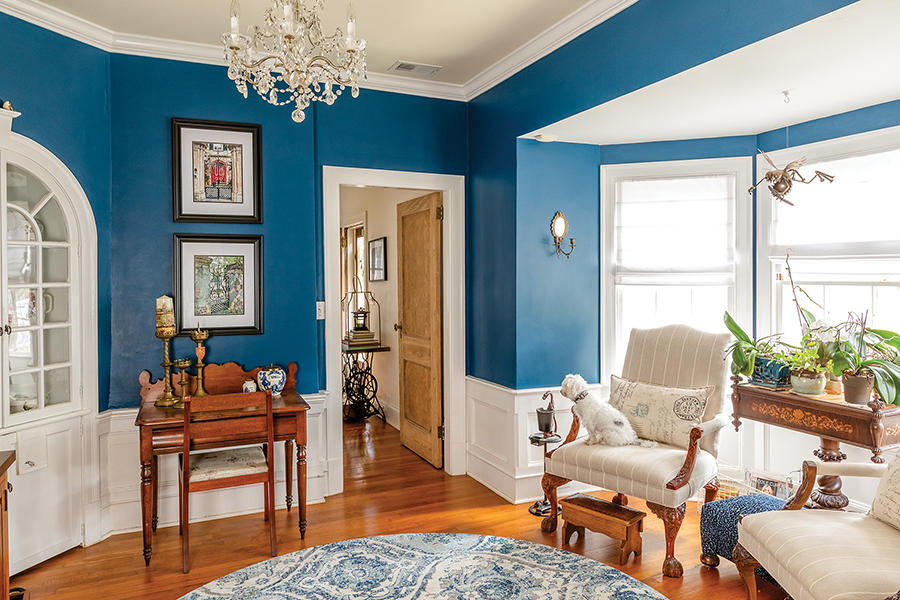
The cottage had been remodeled in the late ’90s, but Bob wasn’t thrilled with its flat roof. Nevertheless, the guest cottage and workshop were a plus, as was the acre of land. They returned to take a look. Soon after, by chance, Lisa met Rassie’s granddaughter, Jill Wicker Gooding, who still keeps a house in Pinehurst.
“This house was meant to be, for us,” Lisa concluded. “We felt an instant connection.”
With help from a contractor, the two medical professionals from Ohio converted space to better uses, even locating a stall shower outside the bathroom proper. They added 900 square feet onto the back, forming a living-dining room with walls sized to fit their furniture, including dining and coffee tables crafted by Bob. In another life, the coffee table was a flatbed trolley carrying wood around a lumberyard. “She finds a picture, I make it,” says Bob.
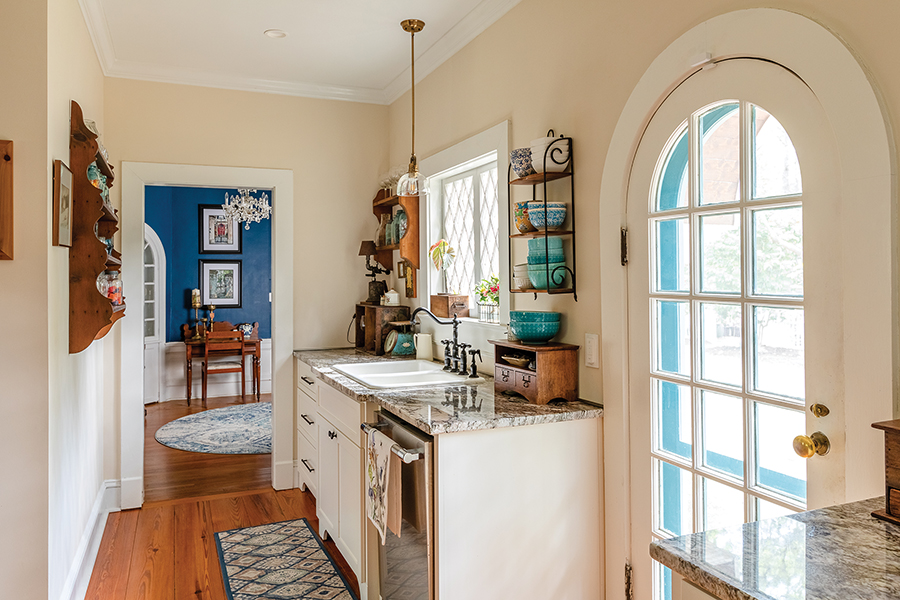
A sun porch was converted (with beadboard paneling and ceiling-height windows) into a guest room — bright and charming as a treehouse. “Dolly’s kitchen” became another bedroom, while the new kitchen-without-walls spread in several directions. The master suite was cobbled from three original bedrooms. That unattractive flat roof gained a pitch, with its rafters removed and reinstalled as shelves. The yellow exterior shakes are now a fresh vanilla.
Some wide knotty pine floorboards, full of character, come from trees Bob estimates were 400 years old.
Furnishings, many family heirlooms, are more homey than elegant. “This is our style, no high-end antiques,” Lisa says. Some enjoy a secondary use, like the carpenter’s bench with attached vise that became a kitchen island — Bob cooks, too — with a school desk (Lisa’s mother was a teacher) anchoring one end. A butter churn and bottle capper became lamps.
“Our goal was to renovate while honoring the past,” says Lisa.
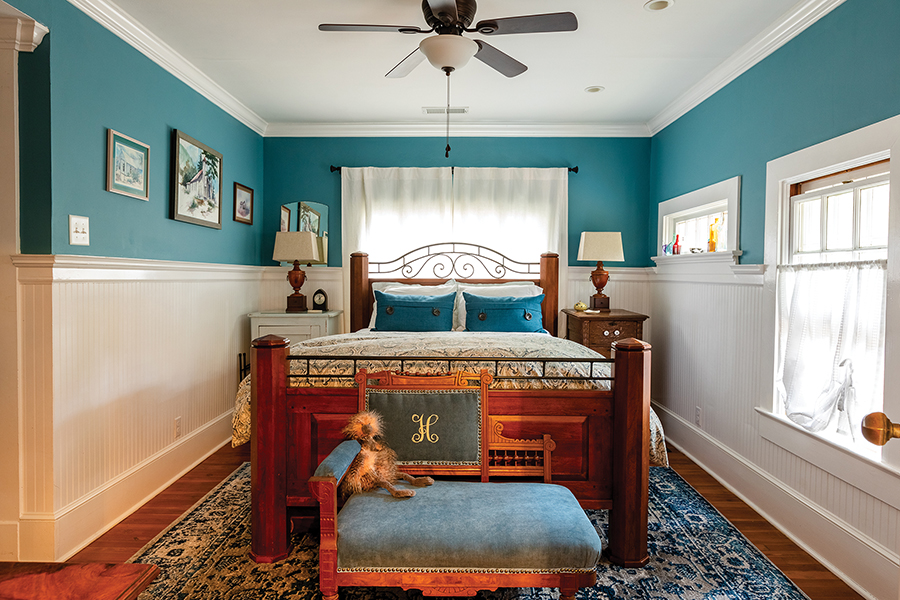
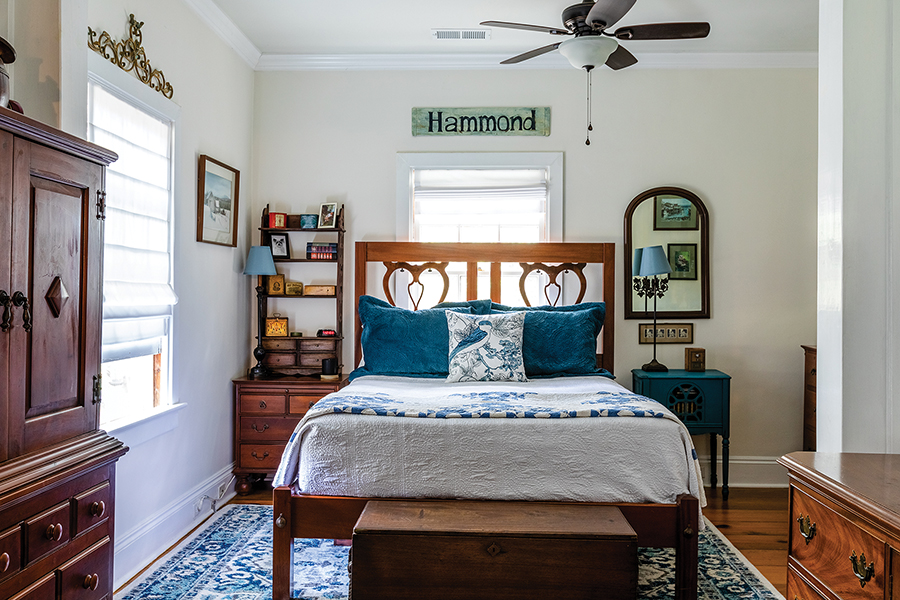
Several tones of sea blue and bright navy flow from room to room. Previous owners had finished off the guest cottage, now with covered deck, perfect for visiting family.
No secret documents or family jewels were plastered into the walls, but they did discover a formal handwritten message from father to son inside a medicine cabinet, dated September, 1923: “Made by J.A. Wicker for Rassie E. Wicker.”
The yard offered additional surprises from the plant-loving Wickers. In 1986 Jill Wicker Gooding wrote to her grandmother Dolly on her 90th birthday: “I remember the round-leaf sweetgum when it was too small to climb and I remember the sunken garden before the ivy took over.”
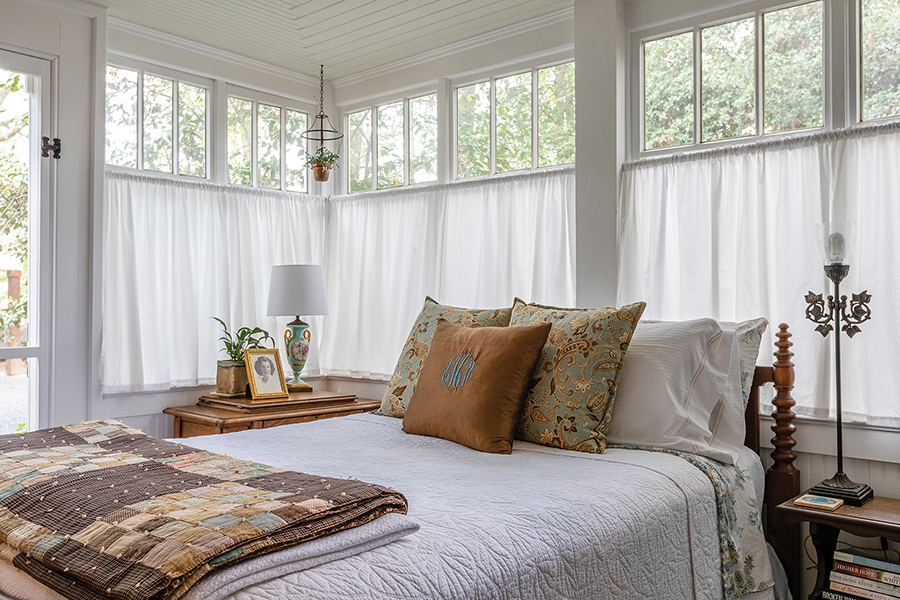
Sweetgum trees were impacted by blight, but the one Rassie moved to his yard lives on. Lisa dug out the brick-walled sunken garden, now ablaze with azaleas. Bob built a window box to fill with pansies. Incredibly, the original wooden picket fence still stands.
Inside and out, among early 20th century cottages built to draw residents to a fashionable winter mecca, this one stands apart. In 2017, Rassie Wicker Cottage was awarded a Pinehurst Historic Plaque by the Village Heritage Foundation, which recognizes the preservation of historic buildings, both grand and simple. It hangs above one of the front doors.
“We think Rassie would be proud,” Lisa says, and smiles. PS
